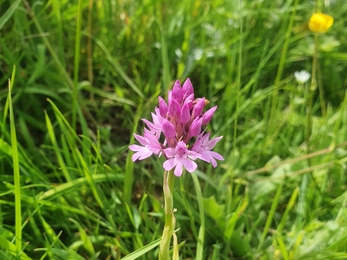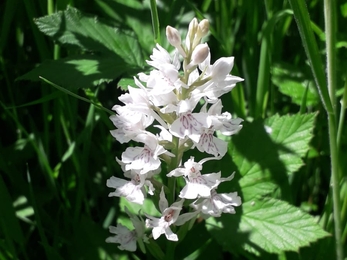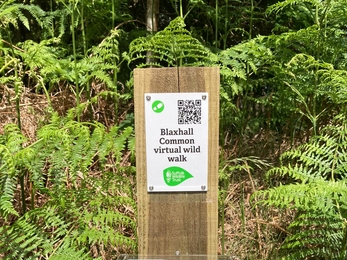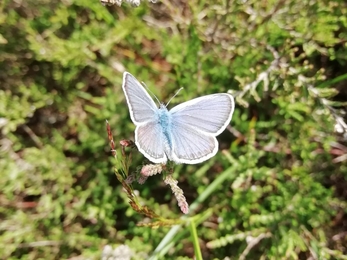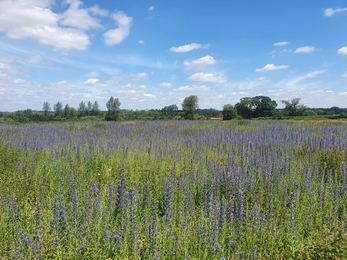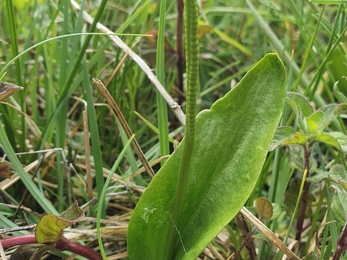Weekly wild news from our reserves – 18 June
Coxcomb prominent moth – Dan Doughty
Many of our reserves have flowering orchids this week. Andrew Excell, South East Suffolk Sites Manager shared these images of southern marsh orchids at Snape Marshes and a bee orchid at Martins’ Meadows.
More orchids! This time a pyramidal orchid from Lackford Lakes and common spotted orchid from Bonny Wood.
Hutcheson's buzzes with life
Hutcheson’s Meadow is also displaying common spotted and marsh orchids as well as ragged robin, buttercup and marsh thistle, which are attracting a great variety of pollinators.
Virtual Wild Walks
At Blaxhall Common you can now discover a virtual guided walk by scanning the QR codes around the reserve. Warden Ben Calvesbert hosts the tour in which you can discover more about the wonderful wildlife on the reserve, such as silver studded blue butterflies. In celebration of our 60th birthday, we invite you to join us on Virtual Wild Walks on six of our stunning reserves. Find out more here https://www.suffolkwildlifetrust.org/virtual-wild-walks.
It’s time to shine a light on wildlife
This time of year is perfect for learning a little more about those often understated and overlooked pollinators on which we all depend - moths. With around 2,500 species of moth in the UK, there's an amazing amount of diversity to be discovered so why not have a go at capturing or spotting some over the next few weeks. There are several techniques to attract night flyers, from leaving a bathroom light on and window open, through to a state-of-the-art moth trap, find out more here https://www.wildlifetrusts.org/actions/how-attract-moths-and-bats-your-garden .
Here are a few species spotted by Trust staff whilst out and about this week.
Assistant Warden Dan Doughty discovered even more marvelous moths at Church Farm.
Not quite snakes in the grass
Two plants bearing the names of snakes slithered on to the scene at Lackford Lakes this week. Viper's-bugloss may have got its common name, 'viper', from its spotted stem, which is said to resemble a snake's markings, or from the shape of its flowers, which look like the head of a snake. The adder's-tongue fern is so named because the tall stalk that bears its spores is thought to resemble a snake's tongue.
No sting in the tail
David Stansfeld was alerted by one of our visitors to a hornet trapped in the ladies toilets at Knettishall Heath this week. There's little doubt that the European hornet, Vespa crabro, is a rather fearsome looking insect but this ferocious exterior betrays a species that is in fact rarely aggressive. Unlike their infamous relatives, hornets are unlikely to disrupt your picnic. Their sheer size - between 2-3 cm's for workers and males, 3-4 cm's for queens - and riotous buzz can, however, make them an intimidating proposition. Hornets are attracted to light. This behavioral trait can leave them viewed with no small amount of trepidation. On warm autumn evenings there is little doubt they'll pay a visit if their nest is placed in close proximity to a well-lit dwelling.
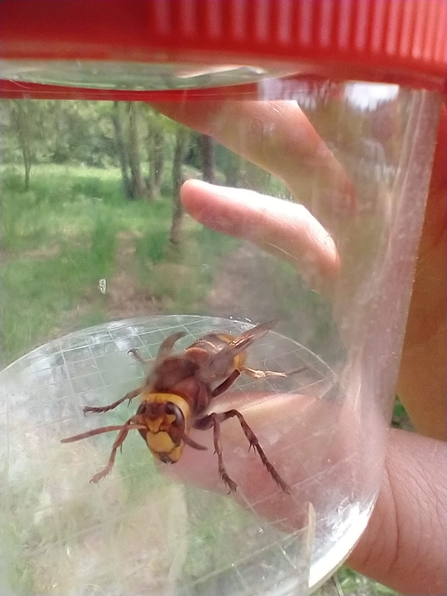
Hornet at Knettishall Heath - David Stansfeld





